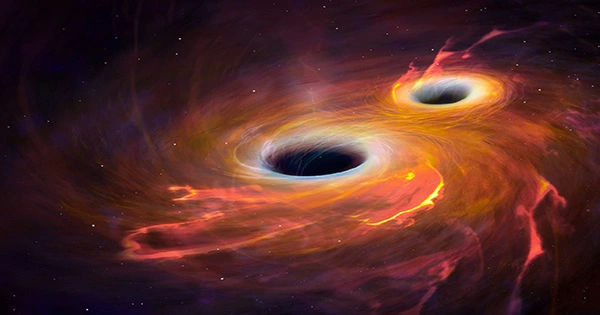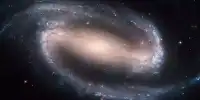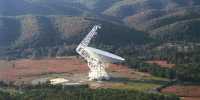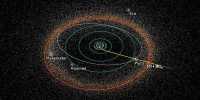It’s always a good idea to double-check your work since you never know what you’ll find. This is a rule that also applies to data. Researchers have uncovered ten new black hole mergers in previously studied data from the LIGO-Virgo gravitational-wave collaborations, according to a fresh analysis — and they’re all strange and fascinating discoveries. The black hole collisions were missed the first time around because they were hidden outside the collaboration’s initially designed detection threshold. Astrophysicists reanalyzed data obtained during the O3a run of the two LIGO and Virgo gravitational-wave observatories in 2019, which had previously uncovered 44 events and discovered 10 additional, to widen the search.
GW190521, for example, contained two black holes with masses of 66 and 85 solar masses. Certain big stars can develop into black holes when they explode in a supernova, but nuclear physics theories imply that black holes generated by stars should be fewer than 50 solar masses or more than 150, not anywhere in between. Previous mergers are most likely the source of these black holes in the upper mass gap. The new data has unearthed even more examples of these occurrences, implying that they are more widespread than previously imagined.
“Finding a black hole in this mass range tells us there’s more to the narrative of how the system evolved,” lead author Seth Olsen, a candidate at Princeton University, said in a release. “There’s a fair possibility that an upper mass gap black hole is the product of a prior merger.” However, there is a lower mass gap that spans the zone between the heaviest neutron stars and the lightest black holes, with additional examples of these limiting collisions revealed by the data.
As if these significant discoveries weren’t enough, the scientists also discovered a previously unknown sort of collision: a large black hole collided with a much smaller one, and their spins were not aligned. The heavier one spun in one direction, while the smaller one spun virtually in the other direction. “The heavier black hole’s spin isn’t exactly anti-aligned with the orbit, but rather tilted somewhere between sideways and upside down,” Olsen explained. “This tells us that this system may come from an interesting subpopulation of BBH mergers where the angles between BBH orbits and black hole spins are all random.”
More information on the new discoveries will be presented at the APS April Meeting 2022 on April 11th. “We’re now starting to witness the diverse range of black holes that have combined over the previous several billion years using gravitational waves,” Olsen said.














